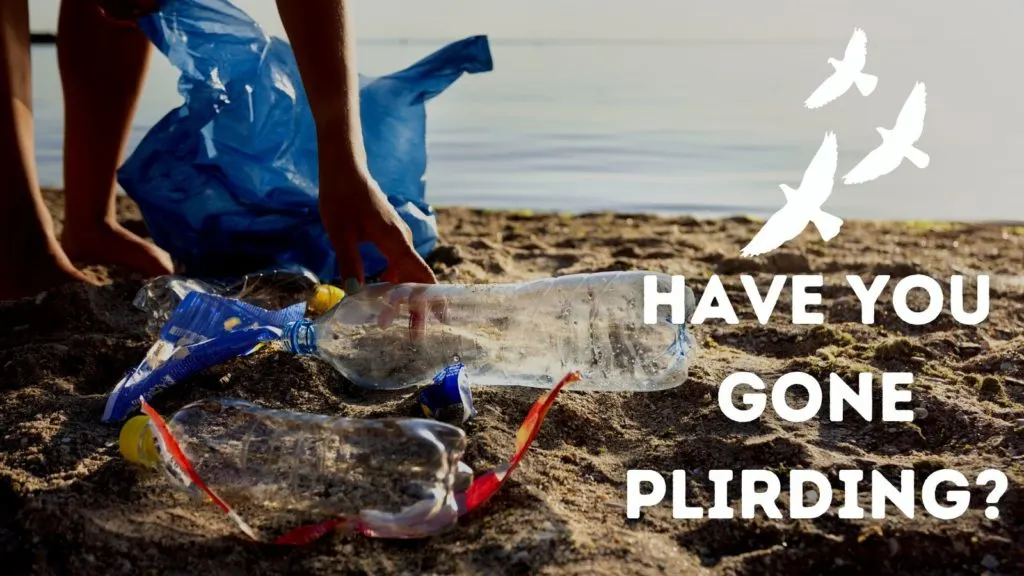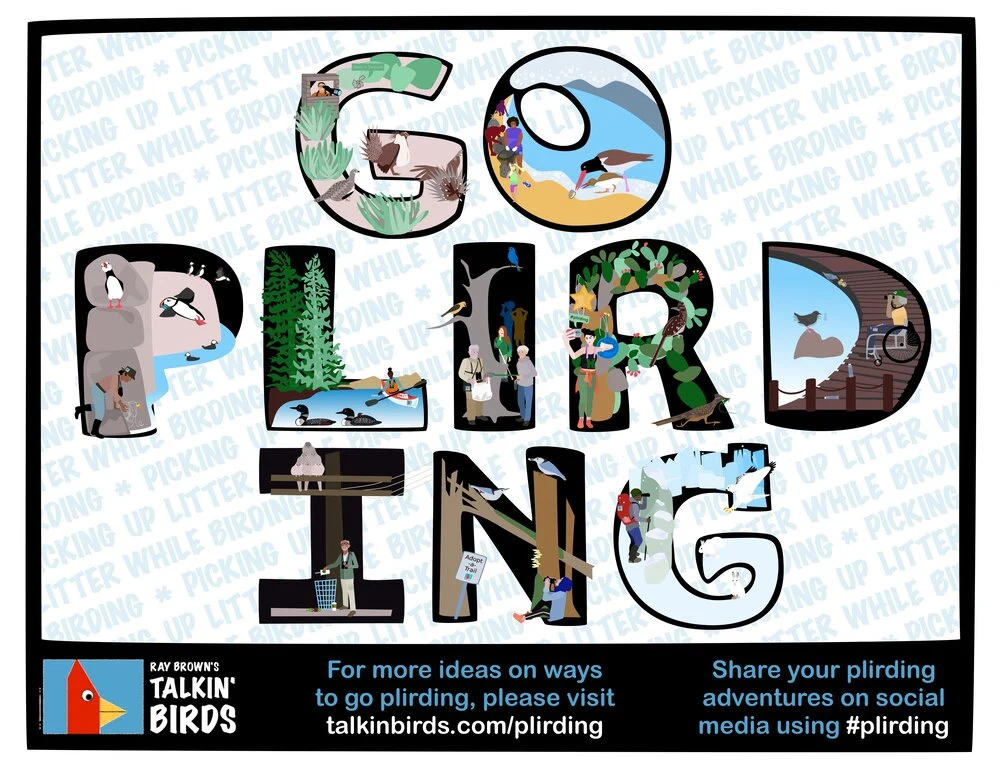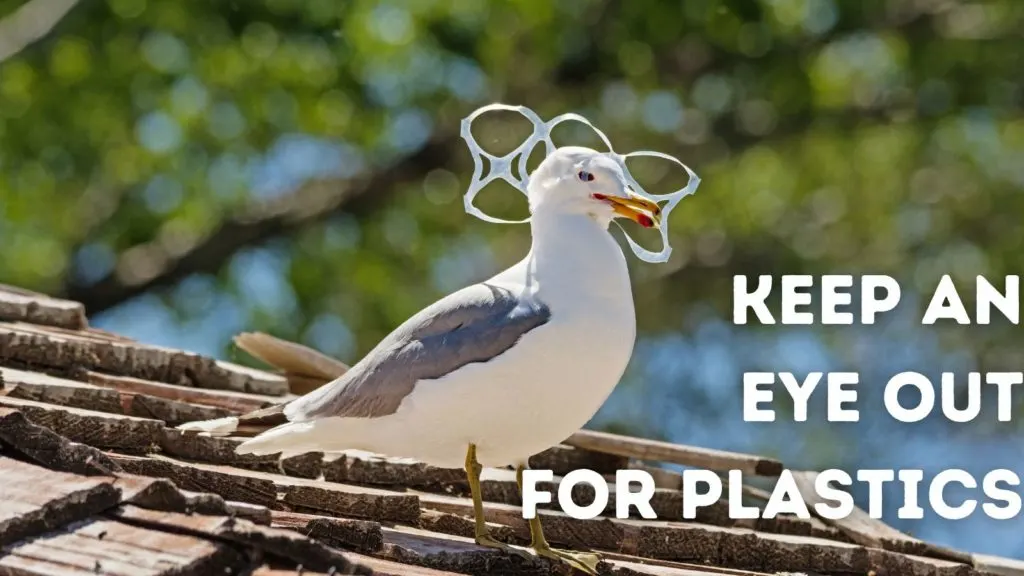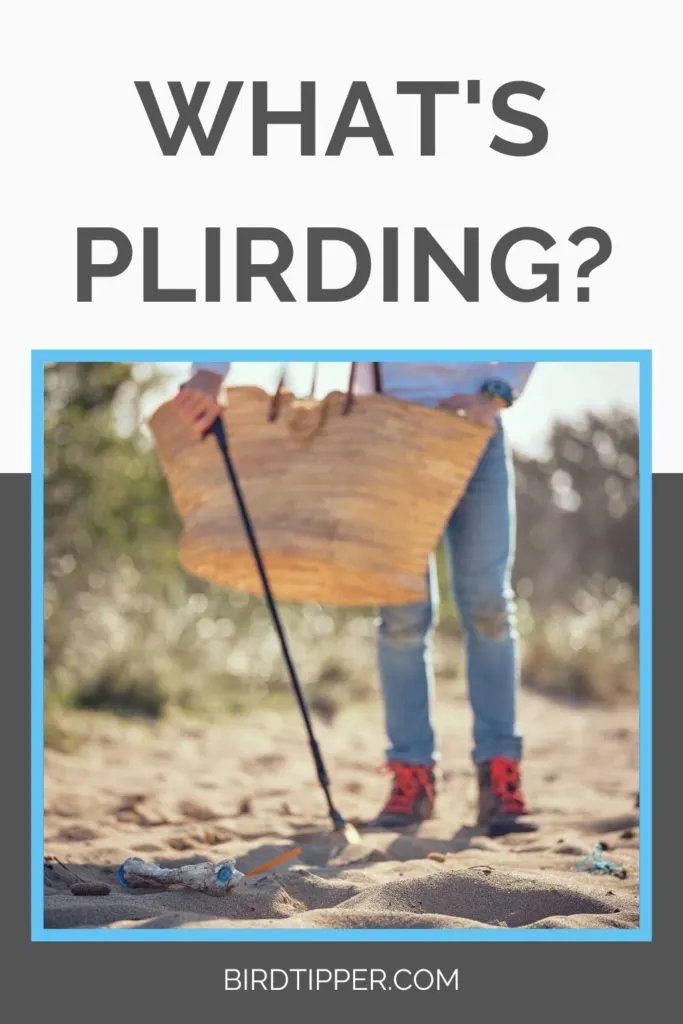Have you heard about plirding? Plirding is birding while picking up trash–and it’s a growing activity at nature centers, birding groups and environmentally-conscious bird watchers!

What does plirding mean?
Plirding is “picking up” trash, derived from the Swedish term “plocka upp” or “picking up.”
You might have heard about other ways to exercise while picking up trash: plogging (picking up trash while jogging), plalking (picking up trash while walking), and pliking (picking up trash while hiking or biking).
Plirding follows in the same footsteps–but while bird watching!
Where did plirding start?

The idea for plirding got its start with Ray Brown’s Talkin’ Birds podcast. You’ll find a plirding pledge you can sign on the site as well as a map of plirding accomplishments.
How can I start plirding?
Plirding can be an individual or a group activity, enjoyed while taking a walk around your neighborhood, at a park or on a trail.
All you need are a few plirding-specific tools:
- a bag for the trash
- gloves for picking up trash
- a trash grabber, if you’d rather grab it with that than your hands (and avoid stooping at the same time)
That’s it! You can spend as much or as little of your bird watching time on plirding, whether that means stopping for a break and plirding around your feet or dividing your walk into bird watching for the first half and plirding for the second half. It’s your choice!

While it’s great to pick up any type of trash while walking, keep a special eye out for trash that’s especially harmful to bird life and other wildlife (or pets walking the same route) including:
- plastics. Even on our dead-end road, I find plastics when I walk, from water bottles that have blown out of the beds of pickups to discarded straws that find their way out of trash trucks on the weekly pickup. Chip bags are very dangerous both to birds and to dogs who can get their head trapped in a bag and suffocate. Six-pack holders can be deadly. Plastics are a huge problem for shorebirds but sadly this is a universal issue so every bird is at risk.
- monofilament. If you walk along a river, lake or beach, you know that monofilament–fishing line–is a huge problem. Discarded by anglers, this nearly invisible line is super strong and cannot be broken if a bird becomes entangled in it. It can slowly strangle birds if it gets wrapped around their necks; it can also cause amputations of feet, legs or wings. Similarly, keep an eye out for kite strings.
- balloons. OK, I know balloons get away sometimes–but we find them far too often for this to always to be the case; I think people are deliberately releasing balloons. Usually the balloons are caught up in trees but we sometimes find them drifting down to the ground as well. Balloons can cause intestinal problems and blockage because they cannot be digested.
Even if your plirding efforts are restricted to a few items you pick up and stuff in your bag on each walk, that effort adds up–and it all helps our birds and other wildlife.
Pin it to remember Plirding!

- Can Hummingbirds Predict Hurricanes? - May 11, 2024
- Can Grackles Be Dangerous to Your Dog? - October 13, 2022
- How to Make Eggshell Calcium for Birds - September 25, 2022
